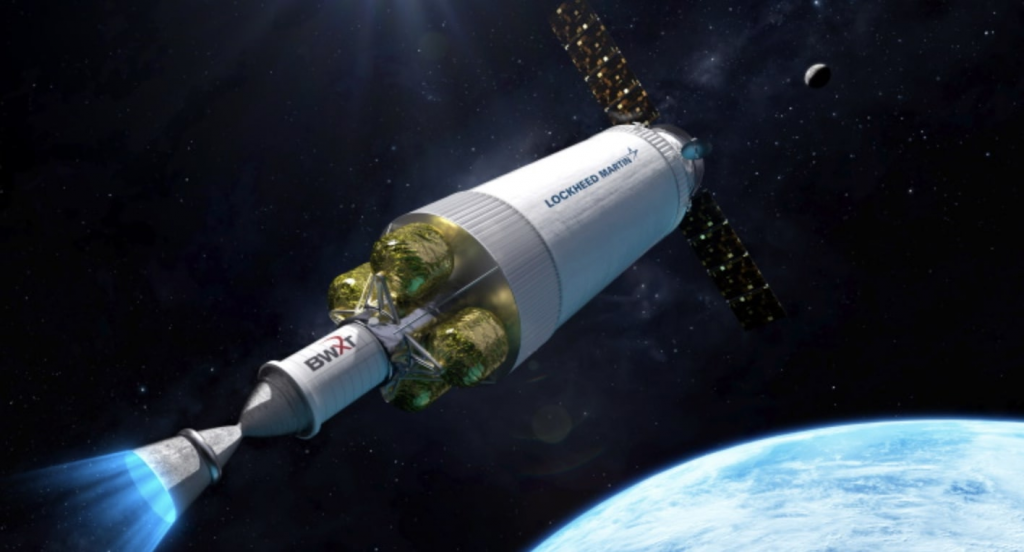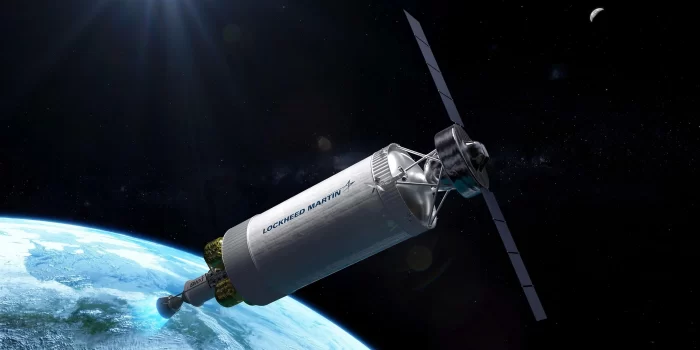By being selected by NASA and the Defense Advanced Research Projects Agency (DARPA) to lead the development of a nuclear-powered rocket demonstrator known as “The Demonstration Rocket for Agile Cislunar Operations” (DRACO), Lockheed Martin, a renowned aerospace and defense company, has accomplished a significant milestone. By testing a nuclear-powered rocket in space as early as 2027, this collaborative venture hopes to revolutionize crewed space missions and pave the path for manned journeys to Mars.
Pam Melroy, the deputy administrator for NASA, expressed excitement about working with DARPA and other commercial space industry organizations since this partnership is anticipated to hasten the development of the vital technologies needed to take people to Mars. NASA’s goals for crew transportation to Mars from the Moon would be greatly aided by the successful completion of DRACO.

Nuclear propulsion offers immense advantages over traditional chemical rockets. It enables quicker and more direct journeys to distant destinations like Mars, simplifying the missions and reducing risks for astronauts. Notably, nuclear-powered rockets are over twice as efficient as chemical rockets, demanding less propellant and providing more space for scientific equipment. Additionally, they offer superior power output for communication systems and scientific instruments, enhancing overall mission capabilities.
Lockheed Martin will assume overall accountability for the spacecraft’s design, integration, and testing, collaborating with various industry partners. The heart of the DRACO engine, the nuclear fission reactor, is being designed and constructed by BWX Technologies, based in Lynchburg, Virginia. The Space Technology Mission Directorate (STMD) of NASA will be responsible for managing and executing the engine’s nuclear power.
Dr. Prasun Desai, acting associate administrator for STMD at NASA Headquarters in Washington, highlighted NASA’s prior investments in nuclear propulsion technology with the Department of Energy, which have helped the commercial sector advance its capabilities. These investments are now paying dividends as the same companies involved in the development are working together to build the first nuclear-powered rocket to fly in space.
The DRACO program has received a substantial commitment of $300 million from NASA to fund its development. Out of this amount, $250 million will be allocated for the design and construction of the nuclear-powered engine, with NASA providing technical oversight and expertise through its personnel. The United States Space Force will offer support for the DRACO launch and its associated launch site activities.
Beyond the DRACO initiative, NASA continues to collaborate with the Department of Energy and private industry on other endeavors related to space nuclear technology. Among these are Fission Surface Power and an exploration of potential designs for future nuclear thermal spacecraft.
With the DRACO program underway, the prospect of utilizing nuclear-powered rockets brings renewed optimism for the future of space exploration. As technological advancements unfold, humanity edges closer to realizing its dream of venturing deeper into the cosmos and, eventually, setting foot on the red planet.


